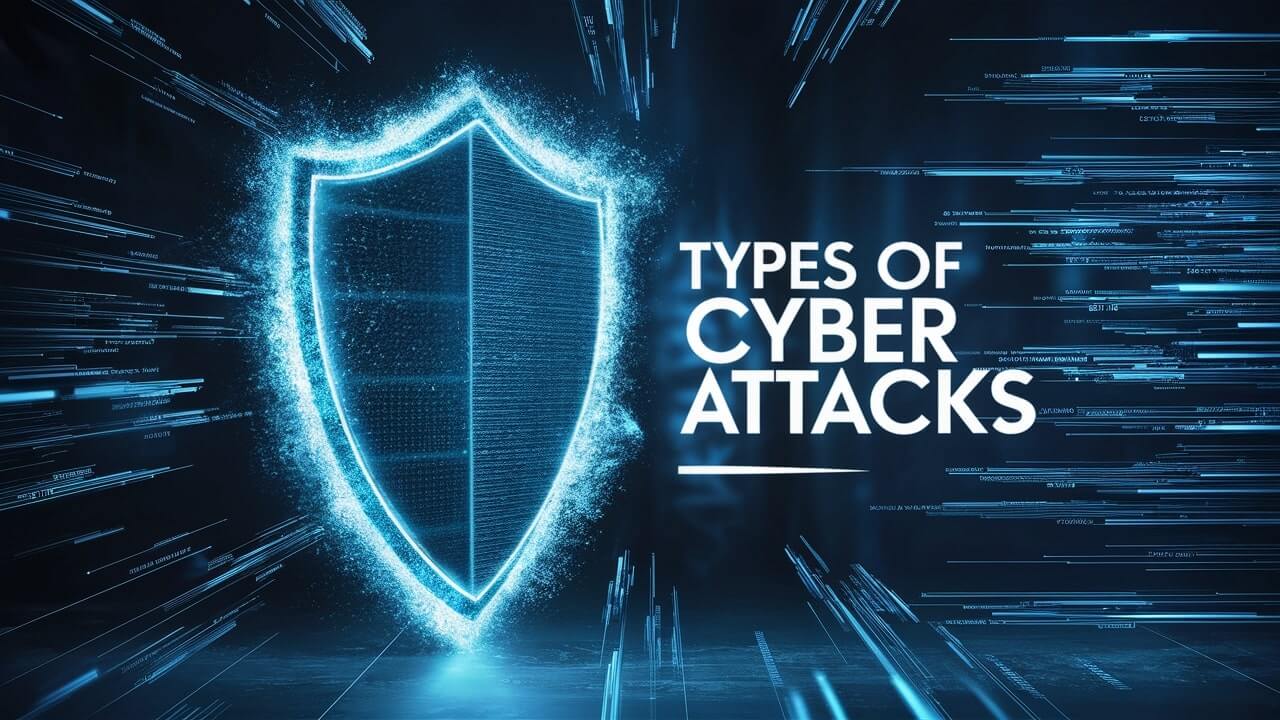
Cyber threats are becoming more serious for people, businesses, and governments. Cyberattacks are powerful tools that cybercriminals use to break into computer systems. They steal private information, stop operations, and cause financial damage.
Cyber attacks are harmful actions taken to enter a computer system or network without permission. They also try to stop the system from working. Hacking groups, or even whole organizations do these attacks. Cyber attacks have different goals. But they often try to steal data, stop operations, or cause money problems.
Every day, at least 450,000 new pieces of malware are found. Malware is software that harms computers. There are now more than 1 billion malware programs.
In 2023, data breaches will cost $8 trillion. Data breaches happen when someone takes data without permission.
By 2031, ransomware will cost the world $265 billion. Ransomware is a type of malware that locks computer files until a ransom is paid. This means ransomware attacks will keep growing and causing more problems.
This guide will explain cyber attacks. It will also show how to protect your organization from attacks.
What is Cyber Attack?
A cyber attack happens when criminals try to enter a computer system without permission. They want to change, steal, damage, or expose information.
Cyber attacks can target different victims, such as individual people, large businesses, and governments.
Criminals often target businesses because they want to steal ideas the business owns, information about customers, and payment information.
The 13 Most Common Cyber Attacks:
There are many types of cyberattacks. Each type uses different plans and targets. Organizations need to know about the most common cyber threats. This helps them make good choices about security. Here are the top ones:
Ransomware
Ransomware is a type of malware that locks a target's files or whole system. Then, it asks for money to get the recovery key. The target usually has a certain amount of time to pay before their data is gone forever.
Ransomware can shut down businesses, stop important work, and cause big money losses. Paying the ransom doesn't always mean you'll get your data back. It could also make more attacks happen.
WannaCry, Ryuk, and REvil are well-known types of ransomware.
Phishing
Phishing tricks people into giving away private information, like passwords or personal details. Cybercriminals do this by sending fake emails, texts, or websites that seem real.
Successful phishing attempts can lead to identity theft, data breaches, and unauthorized access to accounts or systems. Phishing attacks can be simple email scams or complex spear-phishing operations.
Distributed Denial of Service (DDoS) Attacks
DDoS attacks happen when a server or network gets too much data and can't handle it. This makes the server or network unavailable to real users.
These hacks stop online services and websites from working. This could cost money due to downtime.
The Mirai botnet is a known form of malware used for large-scale DDoS attacks.
Advanced Persistent Threats (APTs)
APTs are sneaky, well-planned hacks done by organized enemies with a lot of money. These attackers usually want to steal information or watch for a long time. APTs can lead to the theft of private ideas, protected information, or trade secrets. This is bad for national security and economic growth.
APT29 (Cozy Bear) and APT28 (Fancy Bear) are popular APT groups known for state-sponsored online spying.
Zero-Day Exploits
Zero-day attacks target unknown flaws in software or hardware. This gives attackers a head start on using these flaws before fixes are made.
Zero-day attacks can cause data breaches, hacked systems, and the spread of malware.
The Stuxnet worm used several zero-day flaws to interrupt up Iran's nuclear program.
IoT Vulnerabilities
IoT devices often have weak security, so they can be hacked in ways that affect privacy or let hackers get deep into networks.
Hacked IoT devices can be used in botnets, to steal data, or to get into a network.
The Mirai botnet mostly attacked IoT devices with weak security.
Supply Chain Attacks
In supply chain hacks, attackers use a trusted provider or source to get into a target organization's systems. This is usually done by putting malware or secret backdoors in software or hardware.
These attacks can cause data breaches, unauthorized access, or the spread of malware along the supply chain.
The SolarWinds breach in 2020 is a well-known example.
Insider Threats
Insider threats are bad actions by current or former employees, contractors, or partners who misuse an organization's systems and data. They can cause data leaks, theft of ideas, and damage to an organization's reputation.
Edward Snowden's leak of private NSA documents is a known case of an insider threat.
Credential Theft
Credential theft is when someone gets your username and password without your authorization. This is often done through scams or brute force attacks.
Then, these stolen passwords can be used to get into accounts or systems without permission, which could lead to account takeovers, data breaches, and identity theft. In 2012, when there was a data breach at LinkedIn, millions of passwords were stolen.
Social Engineering
Social engineering tricks people into giving out private information or doing things that are bad for security.
Attackers use tricks like pretexting, baiting, and tailgating to get around technical security and access personal information or systems.
Malware
Malware includes viruses, worms, Trojans, and spyware that damage, steal data, or give unauthorized access. It can cause data loss, system problems, and unauthorized access.
Conficker, Zeus, and Mydoom are well-known examples of malware.
Cryptojacking
Cryptojacking is the secret use of a victim's system, often without their permission, to mine cryptocurrencies for the attacker's gain.
This can slow down systems, increase energy use, and hurt overall performance.
Coinhive was a known script that stole cryptocurrency from browsers.
Artificial Intelligence (AI) and Machine Learning Threats
AI and machine learning can be used to make hacks easier and better. They can make fake material that looks real or make malware work well. These threats make hacks more complex and harmful. They also make it harder to detect and stop them.
DeepLocker is an example of AI-driven malware that can target specific people or systems.
Exploring Lesser-Known Cybersecurity Threats
Organizations must look for many possible risks beyond the top cybersecurity dangers. These threats may not be well-known, but they can still hurt an organization's security. Corporate security solutions need to find, stop, and fix risks that use these channels.
Here are some other security risks to think about:
DNS Tunnelling
Cybercriminals use the Domain Name System (DNS) to make secret communication channels in DNS tunneling. This can be used to get data from a network or avoid security measures.
It is important to find and stop illegal DNS tunneling to prevent unauthorized data exchanges.
DNS Spoofing
DNS spoofing, or DNS cache poisoning, involves changing DNS actions to send users to dangerous websites. This attack can lead to scams, virus downloads, or theft of login information.
This risk can be reduced by using DNS security methods and regularly checking DNS activity.
SQL Injection
SQL injection attacks happen when bad SQL code is put into user inputs. This takes advantage of weaknesses in poorly written web applications. If SQL injection works, cybercriminals can get into databases without permission and see private data.
SQL attacks can be stopped by using filters and safe code in web applications.
Jailbreaking and Rooting
Cyberattacks often target mobile devices. Jailbreaking (iOS) and rooting (Android) both remove software restrictions. This allows users to run unauthorized apps or access system files. This can create security weaknesses and let malware be installed.
These risks can be lowered with mobile device management (MDM) and regular updates.
Operating System (OS) Exploits
Operating system exploits look for weaknesses in the OS that a company uses. These weaknesses can be used to access a system without permission, run harmful code, or damage the system's security.
OS attacks can be prevented and detected with patch management, vulnerability scans, and intrusion detection systems.
Protecting Against the Top Cyber Threats
Protecting against the biggest online risks is very important. Cyberattacks can seriously hurt individuals, organizations, and even whole regions.
Here are some important steps and best practices to help keep you safe from the biggest online threats:
Maintain Current Software and Systems
Update your operating systems, applications, and security software regularly. This helps protect against online dangers. Cybercriminals can take advantage of security holes in old software.
Utilize Strong, Unique Passwords
Use strong passwords with a mix of uppercase and lowercase letters, numbers, and special characters. Don't use easy-to-guess information like dates or common words.
Enable Multi-Factor Authentication (MFA)
Use multi-factor authentication (MFA) whenever possible to improve security. With MFA, users must prove their identity in multiple ways before getting access. This can include a password and a mobile verification code.
Frequently Backup Data
Back up important data and systems regularly to a secure location. This ensures you can get your data back if ransomware attacks or data breaches happen.
Educate and Train Personnel
Train your employees on cyber security to make them more aware of common threats like phishing and social engineering. Give them the knowledge they need to recognize and report suspicious activity.
Monitor Network Activity
Always monitor network traffic for signs of unusual or suspicious activity. Early detection helps identify cyber threats and respond before they cause significant damage.
Restrict Access Privileges
Follow the principle of least privilege (PoLP) by giving users and employees only the access they need to do their jobs. This reduces the risk of insider threats.
Develop an Incident Response Plan
Create a well-defined incident response plan that outlines the steps to take in the event of a cyberattack. Ensure that everyone understands their role in this plan.
Regularly Update Security Policies
Review and update your organization's security policies and procedures regularly to keep up with new technologies and threats.
Encrypt Data in Transit and Storage
Use encryption to protect sensitive data both while it is being transmitted (in transit) and when it is stored (at rest) on systems or databases.
Implement Endpoint Security
Use endpoint security solutions to protect against malware and other threats on laptops, desktops, and mobile devices.
Secure Supply Chains
Make sure your supply chain partners also follow strong cybersecurity practices to prevent threats from third-party vulnerabilities.
Real-Life Hypothetical Scenario
"ABC Bank" is a multinational bank known for its important online banking services. This makes it a tempting target for hackers who want to exploit weaknesses in their systems. But skilled hackers who are very good at using unknown flaws have managed to break into the bank's network.
Initial Intrusion
The attack starts when a malicious actor sends an attractive phishing email to several high-ranking bank employees. The email has a harmless-looking attachment, but when opened, it releases a sophisticated malware that can hide from traditional antivirus programs.
This malware creates a secret connection to a remote computer controlled by the attackers. This gives the attackers access to the bank's internal network.
Reconnaissance
Once inside, the attackers explore to map the bank's network and identify important targets. They find systems containing customer data, transaction records, and financial information they intend to steal for profit.
Exploitation
The hackers use a known vulnerability in the bank's outdated web server software to gain access. This allows them to take control of the web server, giving them the ability to modify online banking interfaces, steal login credentials, and manipulate customer accounts.
Data Exfiltration
Once the attackers control the most critical systems, they steal sensitive customer data, such as names, account numbers, and transaction records. They cover their tracks by encrypting the stolen data and routing it through multiple compromised servers.
Ransom Demand
The hackers leave a digital ransom note in the bank's network, demanding a large sum of cryptocurrency in exchange for the decryption keys to the stolen data. They threaten to release the sensitive information if the bank fails to pay within 48 hours.
Response
Upon detecting suspicious activity, ABC Bank's IT security team immediately isolates affected systems and alerts law enforcement agencies. They engage a cyber incident response team to investigate the breach, assess the extent of the damage, and identify the perpetrators.
ABC Bank decided not to pay the ransom. Instead, it worked with IT security providers to recover the stolen data and fix the vulnerabilities that the hackers exploited.
Why Outsource to a Cybersecurity Provider or Subscribe to 3rd Party Managed Security Services?
Organizations should choose a good managed service provider or use third-party cybersecurity services. This helps protect their organizations from dangerous cyber threats. Here are some important points to think about:
Expertise and Resources
Cybersecurity providers are experts at protecting businesses from many different threats. They have the knowledge, resources, and tools needed to stay ahead of online dangers. These dangers change all the time and can be hard for internal teams to handle.
Continuous Monitoring
Cybersecurity providers offer 24/7 monitoring and risk detection. If there is a breach, it can be fixed quickly. This preventive approach can greatly reduce the harm caused by cyberattacks.
Compliance and Regulations
Many industries and government agencies have security standards that must be followed. Cybersecurity providers can help organizations understand these rules. They can also make sure organizations meet the compliance requirements.
Cost-Effective
Outsourcing security services can be cheaper than building an in-house team. Companies can adjust their security services to match their budgets and specific needs.
Focus on Core Business
By using cybersecurity services, businesses can focus on their main work. They can do this knowing that their digital assets are being handled by experts.
What Next?
Protecting your organization from cyber threats is an ongoing process. As technology advances, cybercriminals will find new ways to attack. This means you must stay informed about the latest threats and best practices in cybersecurity.
Remember, no single solution can guarantee 100% security. A comprehensive approach that combines technology, processes, and people is essential.
This includes:
- Understanding the different attack types: It is important to have a clear understanding of the various cyberattacks that exist, such as malware, phishing, ransomware, and DDoS attacks.
- Assessing your organization's vulnerabilities: Consider what specific vulnerabilities your organization may have that could make it a target for different types of cyberattacks.
- Evaluating the potential impact: Think about how each cyber attack type could potentially impact your organization in terms of financial losses, reputation damage, and operational disruptions.
- Considering prevention and mitigation strategies: Look into what preventative measures can be taken to protect against different types of attacks, as well as how to effectively respond if an attack does occur.
- Budget and resources: Determine whether you have the necessary budget and resources to invest in cybersecurity measures to defend against various types of internet attacks.
- Compliance requirements: Take into account any regulatory or industry compliance requirements that may dictate the need for specific protections against different types of network attacks.
- Reputation and trustworthiness: Consider the reputation and trustworthiness of vendors offering solutions for protecting against different types of cybersecurity attacks before making a purchase decision.
If you don't have the expertise or resources to handle cybersecurity in-house, consider working with a reputable cybersecurity services provider. They can help you assess your risks, implement appropriate security measures, and respond to incidents quickly and effectively.
Investing in cybersecurity is not just about protecting your data and systems. It's also about protecting your reputation, your customers' trust, and your bottom line. Don't wait until a cyberattack happens to take action. Start strengthening your cybersecurity posture today.



